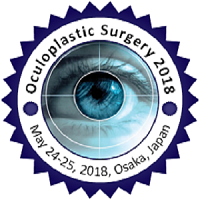
Wensheng Li
Central South University, China
Title: Clear lens phacoemulsification combined with vitrectomy to correct high myopia
Biography
Biography: Wensheng Li
Abstract
Myopic eyes have a higher incidence of sight-threatening retinal complications compared with emmetropic eyes. Three techniques of refractive surgery are primarily used to reduce severe myopia: corneal refractive techniques (laser in situ keratomileusis,LASIK), phakic intraocular lens (IOL) implantation, and refractive lens exchange (RLE). Each technique has its inherent advantages and disadvantages. Thus, there has been a renewal of interest in the removal of the clear crystalline lens and RLE for the correction of severe myopia.
There have been considerable improvements in surgical technique and in the past 20 years of lens surgery.Phacoemulsification in the capsular bag, use of viscoelastic substances, implementation of sutureless corneal tunnel incision, and better equipment have improved the confidence of cataract surgeons and stimulated new interest in clear lens extraction. These considerations allowed some authors to propose that myopia correction with phacoemulsification and low-power IOL implantation can provide results comparable to those of other techniques.
Despite advances in surgical technique, retinal detachment remains a major concern after RLE for high myopia. Uhlmann et al reported that RLE by phacoemulsification in combination with pars plana vitrectomy (PPV) can reduce the risk of retinal detachment without increasing the risk of other complications, but the main limitation of their retrospective series is the small sample size (eight patients), leading to uncertainty in the conclusions. In this study, our aim was to prospectively evaluate the outcomes and complications of RLE by phacoemulsification with simultaneous PPV in the management of severe myopia.

